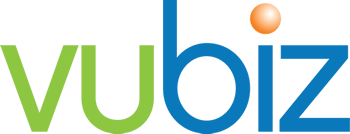 |
Written by Liz McDermott |
Injury and Illness Prevention Programs (IIPP) are mandated strategies to proactively identify and mitigate workplace hazards, thus safeguarding employees from injuries and illnesses. These programs comply with regulations like the California Code of Regulations Title 8, Section 3203, but also demonstrate an employer's commitment to a culture of safety, which is crucial for reducing workplace injuries, illnesses, and fatalities.
By implementing an effective IIPP, businesses can significantly mitigate the direct and indirect costs associated with workplace injuries, including lost productivity and replacement costs, while fostering a safer work environment. The guide ahead outlines the most critical components of an IIPP, providing valuable insights into how to develop, implement, and continuously improve these safety programs.

Key Elements of an Effective IIPP
Management Leadership and Commitment
Management Commitment: Demonstrates a dedication to safety and sets the tone for the entire organization.
Active Commitment to Success from Top Management: Ensures that the leadership actively promotes a culture of safety and health.
Management Leadership in IIPP: This involves top-level management leading the initiative and showing a strong commitment to effectively implementing and maintaining the IIPP.
Worker Participation
Employee Participation: Involves employees in safety processes, empowering them to take ownership of their well-being and contribute to hazard identification.
Worker Participation in IIPP: Encourages active involvement from all levels of employees, fostering a collaborative environment for safety and health management.
Hazard Identification and Assessment
Hazard Identification and Assessment: Regular assessments of potential hazards enable the implementation of preventive measures.
Procedures for Identifying and Evaluating Workplace Hazards: Establish systematic processes to identify and assess workplace risks continuously.
Hazard Prevention and Control
Hazard Prevention and Control: An effective system identifies hazards, corrects them, and prevents their recurrence.
Methods and Procedures for Correcting Unsafe Conditions: Details specific practices for addressing and mitigating hazards effectively.
Employee Education and Training
Education and Training: Provide comprehensive safety training tailored to employees' needs, ensuring they understand workplace hazards and safe practices.
An Effective Program of Instructing Employees: Offers structured and regular training sessions crucial for maintaining safety standards.
Program Evaluation and Improvement
Program Evaluation and Improvement: Regular assessment and adjustment of the IIPP ensure its ongoing effectiveness and relevance.
Continuous Program Evaluation: Includes ongoing reviews to adapt and improve the IIPP, ensuring it meets current safety standards and business needs.
By focusing on these critical elements, businesses can create a robust Injury and Illness Prevention Program that complies with regulatory requirements and significantly enhances workplace safety and health.
Developing and Implementing Your IIPP
Introduction and Scope
Every Injury and Illness Prevention Program (IIPP) should start with a clear introduction and scope. This section outlines the program's objectives, the breadth of coverage, and the specific goals to reduce occupational injuries and illnesses.
Assigning Roles & Responsibilities
Defining who is responsible for what is within the IIPP is crucial. This includes management, supervisors, employees, and the Office of Environment, Health & Safety (EH&S). Each role should have clearly defined responsibilities to ensure the program's effectiveness.
Hazard Assessment and Correction
A systematic approach should be employed to identify and assess workplace hazards. This could involve regular inspections and using tools like CHAMP to manage chemical hazards effectively. Once identified, there should be a straightforward method for promptly correcting these hazards.
Communication Strategies
Open and effective communication is essential for a successful IIPP. This includes disseminating safety information and updates and ensuring a two-way communication channel where employees can report hazards without fear of reprisal.
Incident Reporting and Investigation
Develop a structured process for reporting and investigating incidents. This helps identify why an incident occurred and how similar incidents can be prevented. All incidents must be reported and documented, no matter how minor they may seem.
Training and Documentation
Training should be an ongoing process tailored to the specific hazards of the workplace. Documentation of training sessions, attendance, and topics covered is crucial for compliance and tracking progress. Ensure that all employees, including new hires, undergo safety training.
Compliance and Continuous Improvement
Compliance with all relevant safety regulations is non-negotiable. Review and update the IIPP regularly to reflect regulations, workplace processes, or personnel changes. This continuous improvement will help adapt to new challenges and maintain the program's effectiveness.
Developing Intervention Strategies
Utilize passive and active methods, education, legislation, and technology to develop effective intervention strategies. Clearly state the goals, write measurable objectives, and create a detailed implementation timeline. Engaging community agencies can provide additional resources and expertise.
Monitoring and Evaluation
Regularly evaluate the effectiveness of the IIPP and make necessary adjustments. This includes reviewing the outcomes of safety interventions, employee feedback, and incident reports. Adjustments should be made to address any deficiencies or changes in the workplace environment.
Community and Stakeholder Engagement
Formalize the commitment of all stakeholders, including community agencies, to the IIPP. Define their roles and contributions clearly and maintain regular communication to ensure everyone is aligned with the program’s objectives.
By adhering to these steps and continuously engaging with all stakeholders, businesses can develop and implement a robust Injury and Illness Prevention Program that complies with regulations and significantly enhances workplace safety and health.
Training and Educating Your Team
Comprehensive Training Programs
Training for All Levels: Supervisors and employees should receive timely and specific training that meets the needs of the workplace and individual roles. This ensures that everyone has the knowledge to identify and manage potential risks effectively.
Integration with Policies and Procedures: Training should be integrated with clear, well-documented policies and procedures that guide the organization's daily operations and safety practices. This alignment helps reinforce the training material and ensures consistent application of the knowledge.
Setting Clear Safety Goals: Employers are encouraged to create safety goals that are Specific, Measurable, Achievable, Relevant, and Time-bound (SMART). These goals should be communicated during training sessions to align team efforts toward common safety objectives.
Record Keeping: Employers must maintain comprehensive records of all safety and health training sessions, including attendance and topics covered. This not only helps in tracking compliance but also in assessing the effectiveness of the training provided.
Specialized COVID-19 Training and Responsibilities
COVID-19 Specific Guidelines: Training should cover IIPP COVID-19 guidelines, which include infection prevention measures, encouraging sick employees to stay home, and promoting remote working where possible. Special sessions should focus on physical distancing, frequent cleaning, and correctly using personal protective equipment (PPE).
Managerial Responsibilities: IIPP managers must ensure compliance with COVID-19 prevention measures, facilitate necessary training, and stay updated on the latest policies and best practices. They play a critical role in enforcing safety protocols and supporting their teams in adapting to new preventive measures.
Employee Responsibilities: Employees must complete all required COVID-19 training, adhere to safety practices such as wearing face coverings per CDC guidelines, and maintain physical distancing. It is also their responsibility to stay home if they experience symptoms or are exposed to someone with COVID-19, ensuring the safety of the entire workforce.
PPE and Hazard Assessments: Training should include assessments to determine the specific PPE needs beyond the minimum requirement of face coverings, ensuring that managers and employees are prepared to handle various scenarios.
By focusing on these training and education strategies, businesses can foster a culture of safety and compliance, ensuring that all team members are well-prepared to contribute effectively to the injury and illness prevention program.
Monitoring, Evaluation, and Continuous Improvement
Regular Inspections and Evaluations
Scheduled and Unscheduled Safety Inspections: Employers should conduct both scheduled and unscheduled safety inspections to proactively identify and correct hazards and ensure that the workplace remains a safe environment for all employees.
Incident Reporting and Root Cause Analysis: It is crucial that all incidents, no matter how minor, are reported and investigated thoroughly. This process helps identify the root causes and implement preventive measures to avoid future occurrences.
Ongoing Review and Adaptation of the IIPP: Regular reviews of the Injury and Illness Prevention Program are necessary to ensure it remains current, efficient, and effective. This involves updating the program to reflect new safety regulations, workplace changes, and technological advancements.
Data-Driven Improvements
Collection and Analysis of Safety Data: Gathering data related to workplace incidents, including injuries and fatalities, is essential for understanding trends and areas needing improvement. This data should be analyzed systematically to inform safety interventions.
Evaluation of Program Effectiveness: Employers should conduct process evaluations to ensure the IIPP is being implemented as planned and outcome evaluations to assess if the actions effectively reduce workplace hazards.
Community and Stakeholder Engagement
Involving Community Agencies: Engaging community agencies can provide additional resources and expertise for a comprehensive approach to workplace safety. This collaboration can enhance the implementation and effectiveness of the IIPP.
Stakeholder Feedback: Regular feedback from all stakeholders, including employees, management, and external partners, is vital. This feedback should be actively sought and used to improve the IIPP continuously.
By incorporating these strategies, employers can maintain a dynamic and responsive Injury and Illness Prevention Program that meets regulatory requirements and fosters a safer and more productive workplace environment.
Conclusion
In summary, an effective Injury and Illness Prevention Program (IIPP) involves management leadership and commitment, worker participation, hazard identification and assessment, hazard prevention and control, employee education and training, and program evaluation and improvement.
Developing and implementing a successful IIPP requires a clear introduction and scope, assigning roles and responsibilities, hazard assessment and correction, communication strategies, incident reporting and investigation, training and documentation, compliance, and continuous improvement. By prioritizing these essential elements, businesses can create a robust IIPP that enhances workplace safety and health while complying with regulatory requirements.
Are you looking for training?
Vubiz’s vast library of safety training courses is designed to help organizations educate employees on the variety of safety hazards found in most workplaces based on your business’s job hazard analysis.
